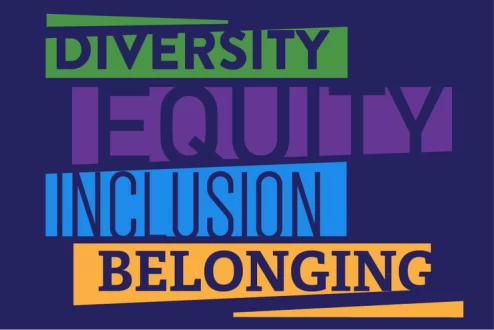
DIVERSITY IN HIRING – DEIB
Diversity in hiring is not just bringing in people from different parts of the globe but much more than that – it needs DEIB– diversity, equity, inclusion and belonging.
Diversity refers to the presence of differences within a given setting. In the workplace, that can mean differences in race, ethnicity, gender, gender identity, sexual orientation, age and socioeconomic class.
1Equity is concerned with the fairness of an organization’s practice and policies. It is not an outcome but a process focused on continuous adjust to ensuring equal access to opportunities for growth, development, and promotion.
“belonging” into the conversation—the experience of being treated and feeling like a full member of a larger community where you can develop well. we can have diversity of representation without inclusion and inclusion without creating an environment in which everyone feels they actually belong.
Inclusion implies a cultural and environmental feeling of belonging and sense of uniqueness. It represents the extent to which employees feel valued, respected, encouraged to fully participate, and able to be their actual selves.
Challenges and solutions to DEIB –
- Building a fair and representative talent pool and pipeline.
Improving your recruitment strategies is a vital first step to building and maintaining a diverse workforce. Conducting diverse talent searches to bring in people from groups underrepresented in our workplace is a good starting point. targets you can set for our pipeline. Once we have expanded our pipeline to fit our needs, we can continue the tracking of DEIB throughout the recruitment cycle, identifying sources, keywords, or phrases that led to hired candidates.
- Communication issues
Many companies face communication issues, but these problems are bound to arise when you ask people from different backgrounds, cultures, genders, ages, etc., to work together. Misunderstandings, clashes, and conflicts will happen. It’s important to address these challenges before they become problematic.
- Meeting diversity compliance
It’s crucial to generate a diverse and inclusive pipeline. Because of its many benefits, diversity, inclusion, equity, and belonging is becoming a bigger area of focus for companies. But as our company begins to introduce DEIB best practices, they must keep Equal Employment Opportunity Commission (EEOC) and Office of Federal Contract Compliance Programs (OFCCP) requirements in mind. Both laws allow companies to source for very specific types of candidates to increase diversity.
- Training for DEIB
Getting our entire workforce up to speed on DEIB practices can be a challenge. Good DEIB training empowers employees to look out for one another, and speak up if they see inequitable treatment of a colleague. But even before employees are hired, managers and recruiters need to know how to prioritize DEIB in the talent acquisition process, and to be aware of their biases in the hiring process.
Importance of Diversity, Equity, Inclusion, and Belonging in the Workplace
When people truly commit to driving diversity, equity, inclusion, and belonging in their workplace, they become more empathetic and engaged. This behaviour has a ripple effect, encouraging other employees to consider how they can bring DEIB to their work as well, thereby turning the office into a more compassionate, productive place
- Improves bias awareness
- Increases talent pool
- Boosts employee engagement
- Offers better decision making
- Improves performance
Conclusion
Diversity, equity, inclusion, and belonging are more than just concepts. When implemented, they supercharge our company’s success in the market and encourage innovation for years to come. But it can be challenging to build a workplace with DEIB values at the core—especially if you lag behind competitors, or fall short of diversity compliance goals.



